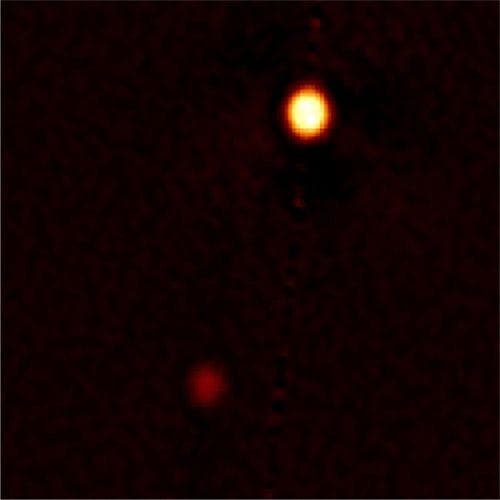
with David Fuller

PLUTO! Yes, the planet!
I had made a video about how to find Pluto, and why this time was a good opportunity to try and spot the little pla... uhhh - dwarf planet. Two weeks ago some of my friends who are part of the informal Chicago Astronomer group indicated this last weekend might be a good time to try it. I put it on my calendar, and was not disappointed!
We met at Conway Observatory in Lowell Indiana. The skies are between 5.5 and 6.0 magnitude, NELM - well, overhead and to the south that is. To the north, the glow of the city and urban sprawl still block stars down to 3.5 or 4.0 about 40 degrees and below. But we weren't looking north. I had researched how high Pluto would be above the horizon: It was to be 20 degrees by 10:45, 25 degrees by 11:45, and culminate on the meridian at 29 degrees around 12:45 or so.
Being a glutton for punishment, I started trying around 10:30 or 11:00. But, I had something going for me: VERY transparent skies. It took about 5 minutes of searching, and using averted vision, but I was 80% confident I was seeing Pluto very near a small triangle of stars. My friend Paulie said this was a special night, because he didn't know anyone who had ever seen Pluto with their eyes before. I asked Paulie and Bill to look too - both are experienced observers of faint objects themselves. They said they could see it averted too. This was exciting, because Conway has a 16" SCT there. And I had both the chart I had made from Stellarium, and another one I had modified from this star chart down to magnitude 14.5, that I inverted to have black stars on a white background, and then printed.
About 11:30 or 12:00, I don't know for sure as I wasn't paying attention to my watch at that point, we decided to look for Pluto with the 16". Sagittarius was definitely a lot higher at this point, and the Milky Way in that part of the southwest sky was such a different view than what I get from my house: The clear "steam" off the "Teapot," and the Scutum cloud just glowed with such an obvious light that it was difficult to not imagine the arms of our galaxy wrapping around our tiny solar system. I had never used the 16" scope before, and we were starhopping our way there. Plus, my reflector had inverted the image and reversed it left to right; the SCT had it corrected up/down, but inverted left right. And, I didn't know the field of view.
I struggled for a bit, trying to find the same field. Finally my friend Paulie showed me how large a field of view I was seeing, based on his trying to find it two weeks earlier. With that, I had it in about a minute or two. It was still faint - surprisingly fainter than I expected, given the large jump in aperture over my 10", but there it was - direct vision, right in the spot where it had been with my Dob.
Before I even left to go over there, I had stopped by the fast food restaurant where my daughter works before I left. She asked what I was doing, and I told her I was going to try to see Pluto, even though it's not a planet anymore. She made me smile when she said, "Well, I
learned that the solar system has nine planets in school - so it's a planet, Dad." She's a great kid, is she not? Hard to say which part of the night was the better highlight - that or Pluto. :grin:
So with that, I guess I've finally seen all 'nine' planets.
